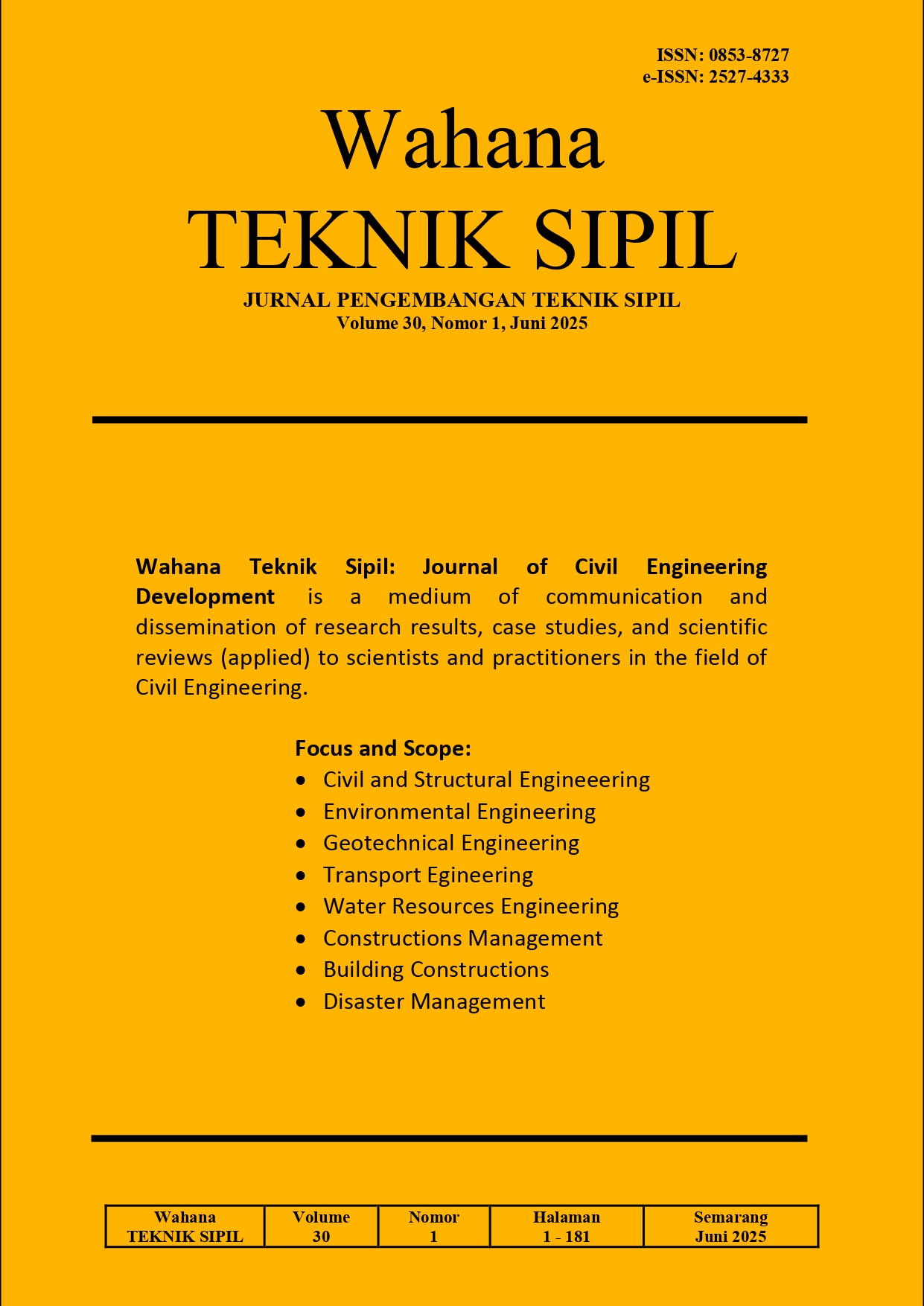ANALISIS PERILAKU BETON RAMAH LINGKUNGAN DENGAN SERBUK LIMBAH KARET BAN BEKAS DALAM PERSPEKTIF FORENSIC ENGINEERING
DOI:
https://doi.org/10.32497/wahanats.v30i1.6328Abstract
Concrete with waste tire rubber powder is one of the approaches to utilizing rubber waste, which continues to increase in volume over time. This study aims to investigate in detail the effects of using waste tire rubber powder on the mechanical properties of concrete through experimental methods, with a focus on compressive strength and elastic modulus. The comparison results of compressive strength and elastic modulus are then analyzed using a forensic engineering approach to determine their impact on potential structural failures and their influence on the service life of the structure. The results of this study show that the use of rubber powder in the range of 2.5% to 10% as a fine aggregate substitute in concrete mixtures can reduce compressive strength and elastic modulus by approximately 16% to 28% for compressive strength, and 5% to 11% for elastic modulus. In terms of structural service life, the use of rubberized concrete can reduce the service life by approximately 22% to 27%. Rubberized concrete offers great potential in rubber waste utilization and in enhancing the sustainability of construction materials. However, from a forensic engineering perspective, rubberized concrete presents new challenges in understanding, evaluating, and predicting the long-term performance of structures.
Downloads
Published
Issue
Section
License
Copyright (c) 2025 Listiyono Budi, Endah Kanti Pangestuti, Fatimah

This work is licensed under a Creative Commons Attribution 4.0 International License.
Authors who publish with this journal agree to the following terms:Authors retain copyright and grant the journal right of first publication with the work simultaneously licensed under a Creative Commons Attribution License that allows others to share the work with an acknowledgement of the work's authorship and initial publication in this journal.
Authors are able to enter into separate, additional contractual arrangements for the non-exclusive distribution of the journal's published version of the work (e.g., post it to an institutional repository or publish it in a book), with an acknowledgement of its initial publication in this journal.
Authors are permitted and encouraged to post their work online (e.g., in institutional repositories or on their website) prior to and during the submission process, as it can lead to productive exchanges, as well as earlier and greater citation of published work (See The Effect of Open Access).






